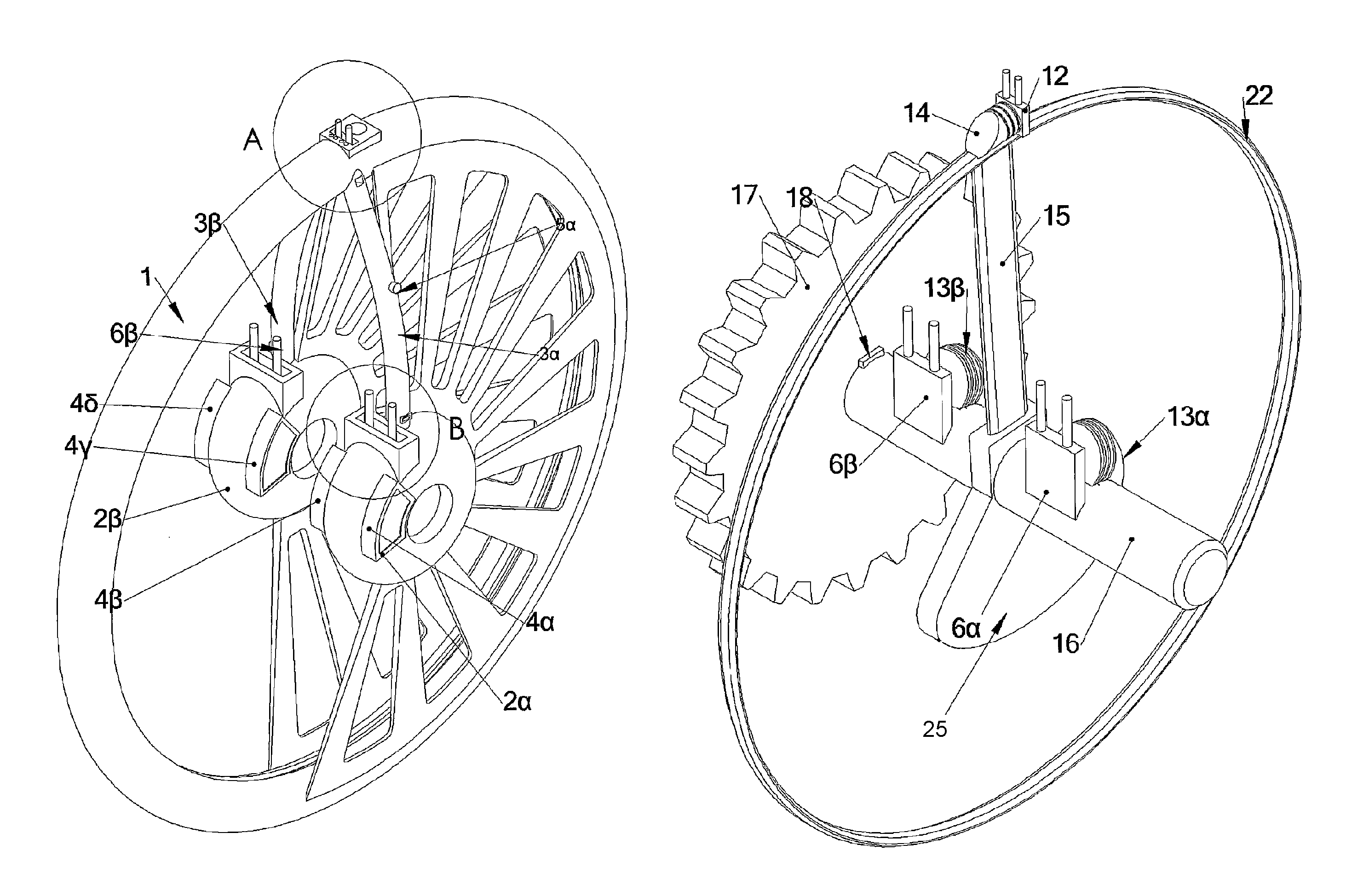Internal combustion engine
- Summary
- Abstract
- Description
- Claims
- Application Information
AI Technical Summary
Benefits of technology
Problems solved by technology
Method used
Image
Examples
Embodiment Construction
[0033]The motor consists of four moving and one stable part which are depicted in the FIGS. 2 to 6:[0034]The stationary external block of the engine (FIG. 2) comprising of the combustion-expansion chamber (1), the induction-compression chambers (2α and 2β), the pressure chambers (3α and 3β) and the air filters (4α, 4β, 4γ and 4δ). The air filters are located on the shells of the compression chambers in the inlet openings of the atmospheric air. In the figures, the air-filters are located on both sides of every compression chamber creating two inlets of atmospheric air in every chamber. The pressure chambers may have every possible shape. However, in the figures a canal-shape is chosen so that the chamber will have the minimum possible volume. On the shell (1) two fuel injectors (7α and 7β) and two spark-plugs (8α and 8β) are fitted. The numbers 6 and 12 represent the sliding ports of compression- and expansion-chamber, respectively. The place (10) is the point where the exhaust gase...
PUM
 Login to View More
Login to View More Abstract
Description
Claims
Application Information
 Login to View More
Login to View More - R&D
- Intellectual Property
- Life Sciences
- Materials
- Tech Scout
- Unparalleled Data Quality
- Higher Quality Content
- 60% Fewer Hallucinations
Browse by: Latest US Patents, China's latest patents, Technical Efficacy Thesaurus, Application Domain, Technology Topic, Popular Technical Reports.
© 2025 PatSnap. All rights reserved.Legal|Privacy policy|Modern Slavery Act Transparency Statement|Sitemap|About US| Contact US: help@patsnap.com



